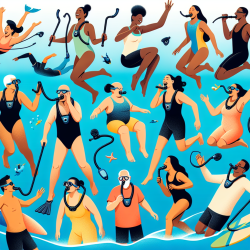Introduction
For individuals who have undergone a laryngectomy, participating in water activities can be a daunting challenge due to the risk of water entering the airway through the stoma. However, a new proof-of-concept device called the STORKEL offers hope by enabling laryngectomees to safely engage in these activities. This blog explores the design and potential impact of the STORKEL, encouraging practitioners to consider its implications for enhancing the quality of life for laryngectomees.
The Challenge
Laryngectomees face numerous challenges post-surgery, including changes in speech, breathing, and lifestyle. Water activities, which many individuals enjoy, pose a significant risk due to the possibility of accidental submersion and water entering the airway. The STORKEL device addresses this issue by providing a solution that allows safe participation in water activities.
Design and Functionality
The STORKEL device consists of three main components:
- Stoma Attachment: A secure and comfortable attachment to the stoma that allows for speech and prevents water ingress.
- Breathing Tube: A flexible tube that connects the stoma attachment to a float valve, allowing for comfortable respiration.
- Float Valve: Automatically seals the airway when submerged and opens upon resurfacing, ensuring safety during unexpected submersion.
These components work together to provide a secure and functional solution for laryngectomees wishing to return to water activities.
Encouraging Practitioners
Practitioners working with laryngectomees should consider the STORKEL as a promising development in assistive technology. By understanding its design and potential benefits, practitioners can better support their clients in achieving a higher quality of life through participation in recreational activities.
Additionally, practitioners are encouraged to engage in further research and development of similar devices to address other challenges faced by laryngectomees. Collaboration with engineers and designers can lead to innovative solutions that enhance the lives of those with unique medical needs.
Conclusion
The STORKEL represents a significant step forward in assistive technology for laryngectomees, offering a means to safely engage in water activities. Practitioners are encouraged to explore this device and its potential applications, and to consider further research and development in this field. By doing so, they can play a crucial role in improving the quality of life for their clients.
To read the original research paper, please follow this link: An automatic water-occluding device to enable laryngectomee participation in water activities.










